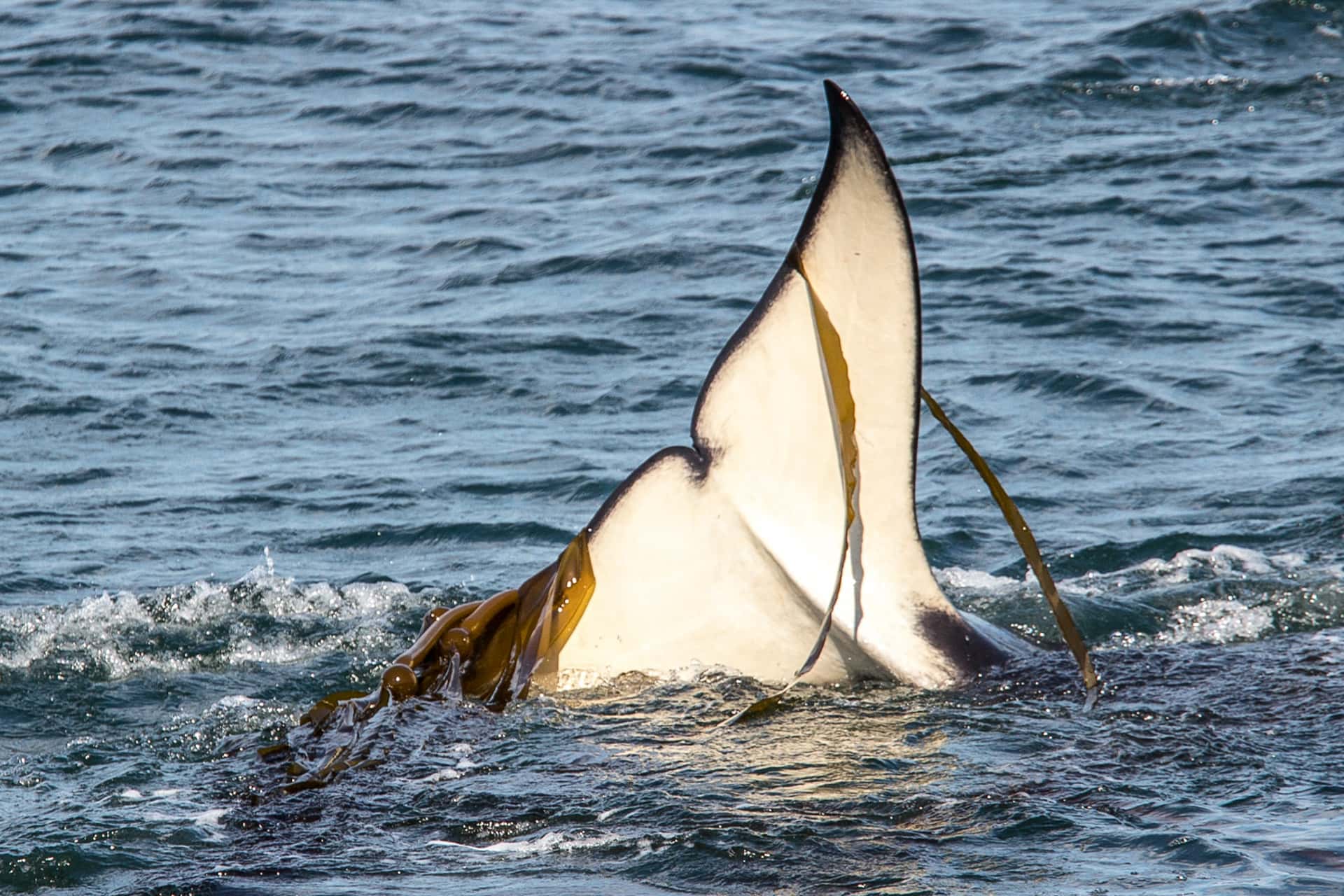
The decline of the Southern Resident killer whale population has long been linked with decreasing prey availability, but size also matters. Selective targeting by fisheries of the largest Chinook has resulted in this species—and others—reaching smaller sizes as adults, reducing the number of calories available to a predator.
A recent research study examined published data from 1979 to 2020, to evaluate how changes in Chinook salmon size and abundance, over these 40 years could impact the daily energy needs, and survival, of the Southern Resident killer whales.
The researchers developed two computer models; one with abundance estimates for Chinook populations with a migratory route through the Salish Sea, with estimated age/size of fish aged three and older—that is those favored by these killer whales. The second model calculated the whales’ daily Chinook consumption; by estimating the body size of each individual in the population, the researchers could calculate their “daily prey energetic requirement.” They concluded that each whale needed, on average, 225 lb. of Chinook salmon a day.
Researchers calculated that the whales’ total consumption—from April to October—ranged from a high of 216,300 Chinook in 1993, when there were 97 whales in the population, to a low of 166,000 Chinook in 2018, when there were just 75. This reflects the intimate connection between prey availability and predator survival.
The model showed that over the last 40 years, the overall abundance of Chinook—of all ages—decreased, with two substantial drops: a 22% decline from 1993 to 1999, and then a further 18.4% decrease between 2015 and 2020.
Not only are their fewer Chinook today, they are less likely to reach their maximum size than in previous decades. Yet these older, larger fish are critical if the whales are to meet their daily energy needs. The model showed that when larger Chinook are less abundant, they are “significant predictors of energetic shortages.” Little wonder when the number of Chinook living to 3-, 4- and 5-years of age has decreased—along with their length—as much as 4 inches for a 5-year old, that’s a loss of 220 calories per fish.
In fact, the model suggested that since 2008, there have been 5 years when the Southern Resident killer whales had insufficient food to meet their daily energy needs—with a worrying consecutive period from 2018 to 2020. The researchers noted that in most years, this prey shortage resulted in “a high calf mortality rate and low birth rate.” This reflects findings from pregnancy hormone research that linked insufficient prey with a 69% pregnancy failure rate.

According to the model, 82% of the Chinook consumed in the Salish Sea over the last 40 years were from the Fraser River, Columbia River, and Puget Sound. However, their relative contributions have changed quite markedly. In 1979, Columbia River Chinook formed 27% of the whales’ diet, but had increased to 61% by 2014, whereas Puget Sound Chinook “decreased substantially between 1979 and 2020.”
These changes are reflected in the Southern Resident killer whales’ behavior. With Fraser and Puget Sound Chinook less abundant, their visits are noticeably less frequent and shorter, as they search for Columbia River Chinook on the outer coast. The study showed that this seasonal prey shortage comes at a cost to the whales, who “consistently consumed less calories in the spring than during the fall.” They suggested that consequently the whales could “undergo a more acute nutritional stress during the spring,” as was previously shown by a stress hormone study.
Continued below...
The scientists did note one limitation in their modeling: they could not account for prey accessibility—that is when noise and disturbance from vessels impedes successful foraging, as a number of other studies have shown.
Nevertheless, this study highlights a disturbing recent trend in prey shortages that will surely translate to poor health, lost pregnancies and less robust whales, as is so visibly evidenced in WDFW’s recently released list of 13 “vulnerable whales.”
As this study concluded in 2020, the fecal samples Wild Orca has collected thus far in 2022 will be important indicators of the current health of the Southern Resident killer whales. This year’s samples will be especially important, as the whales returned to the Salish Sea earlier in 2022 than has been the “new normal.” We will share timely results from our analyses with the appropriate agencies, and ensure that the most up-to-date science can be used to benefit this population.





